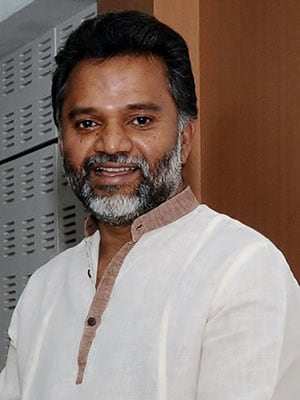
Needed: Entrepreneurial models that work for 'Bharat'
The current equity investment model that requires valuations of startups to be jacked up at each stage, is a kind of a Ponzi scheme, says entrepreneur and angel investor Nagaraja Prakasam
With the groundswell of enthusiasm for startups in India, we are risking aping the western model that created too-big-to-fail corporations, which used public money to ameliorate the effects of private folly, says Nagaraja Prakasam, a strong voice in the Indian Angel Network.
As India looks to implement a Startup Action Plan, the larger task is to ensure that the ventures it encourages works for “Bharat,” he said in a recent interview.
“The scheme of investment in equity, I call it a kind of a Ponzi scheme,” Prakasam said.
An entrepreneur puts his own money in a new venture, maybe gets some help from friends and family. The next step is he gets a good mentor, who could become an angel investor as an individual. Then come the accredited angel groups, and so on. In the popular (Western) model, “at each stage the valuation needs to increase.”
How does an investor make money? In each round of investment, the company needs to grow, then there is appetite for more money, then there is an investor or clutch of investors with deeper pockets and at that stage again increase the valuation.
Therefore on paper, the value of the stock held by the earlier investors go up. At that stage, if the latest, more deep-pocketed investor perhaps offers to buy some stock from existing shareholders, and they get a return on their early investment.
The underlying principle, however, is that “I’m just moving the buck from one to the next, and towards the end is an IPO. It ends up in the common man’s pocket.”
This process is creating two problems: One is, every business has to have scalability. It has to have a potentially huge revenue market. “How many businesses can be like that?” Prakasam said. Only businesses of that sort can be attractive to investors, because the investment is market driven, so investors will only look at trending sectors, which can scale very fast. That’s also why people are talking about “asset-lite” businesses.
However, “If everybody goes asset lite, who’s going to make the idli.” If everyone wants to only sell idlis and not even deliver it, if through technology they only want to connect people, someone actually has to make the idlis, someone has to get it to the hungry, so who’s going to do that. This is where the problem of scalability happens," he pointed out.
Unfortunately, this equity investment model is what is available today in the world.
The second problem is, who will invest in “non-trending” startups with potential. Someone has to take the risk of looking at businesses with potential, but which aren’t necessarily trendy or sexy. Then slowly others will come in.
The Securities and Exchange Board of India’s attempt at an alternative investment model through an online exchange may be one option that could mitigate the problem of jacking up valuations to some extent, he said.
For instance, between Rs 50 lakh to Rs 100 crore, one could make it easy to raise money on this platform, so people who already have shares in a promising business can sell on this exchange and don’t need to wait for the valuation cycle of investment.
Another thought process is, just as India leapfrogged into the mobile world, it can leapfrog in many other areas as well, including devising business models that work for Bharat, meaning for the much larger part of India beyond only the English-speaking, urban middle class demographic.
“Today, alarmingly, we are copying the US model, which leads to the creation of ‘too-big-to-fail’ corporations and the concentration of wealth and opportunity in the hands of very few,” he said, adding that today every startup in India wants to become a US-like big business.
“Can we slow down, can we build businesses that work for us and become role models for the rest of the emerging nations?”






